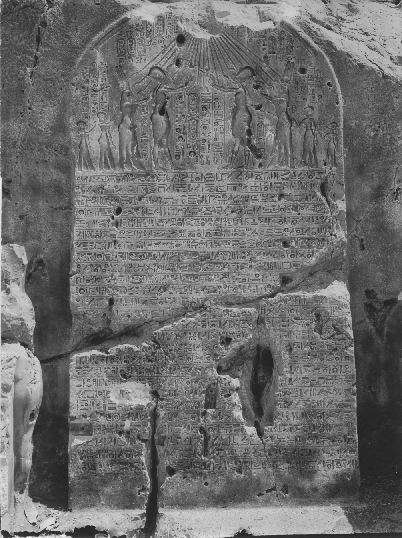 Early in his reign, King Akhenaten (1353-1337 BC) founded a
new capital of
Egypt on the east bank of the river Nile, at the place which
is now called
El-Amarna (this is in Middle Egypt, approximately 170 miles = 270 kilometres to
the south of
modern Cairo).
Early in his reign, King Akhenaten (1353-1337 BC) founded a
new capital of
Egypt on the east bank of the river Nile, at the place which
is now called
El-Amarna (this is in Middle Egypt, approximately 170 miles = 270 kilometres to
the south of
modern Cairo).The city contained royal palaces, temples for the Aten (the Sun-Disc), and administrative buildings, as well as private houses and workshops. It was called Akhetaten which in Egyptian meant "The Horizon of the Sun-Disc". It has been suggested that the name of the city derived from the two hills between which the sun appeared in the morning - the Egyptian word for "horizon" was written with the hieroglyph showing two hills.
The city, however, remained capital of Egypt only for about fifteen years. After Akhenaten's death, during the reign of King Tutankhamun, it was abandoned and the royal court moved to Mennufer (some 15 miles = 24 kilometres south-west of modern Cairo).
The boundaries of the city of Akhetaten were marked by a series of stone monuments (called stelae). The photograph shows of them. The scene at the top depicts King Akhenaten, Queen Nefertiti and two of their daughters worshipping the Aten (the Sun-Disc with rays in the form of human arms). Norman de Garis Davies MSS. 1.418. © Griffith Institute, Ashmolean Museum, Oxford.